



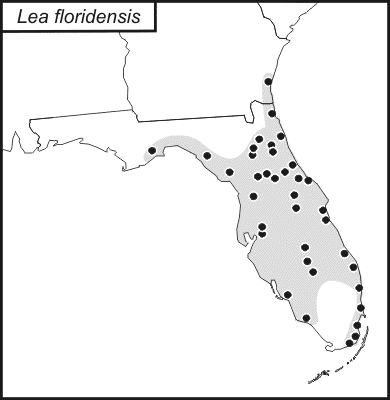
|
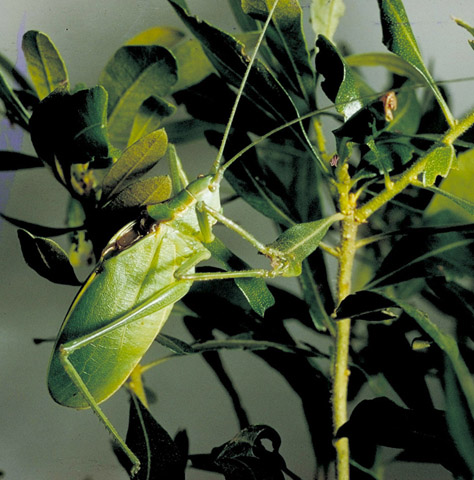
|
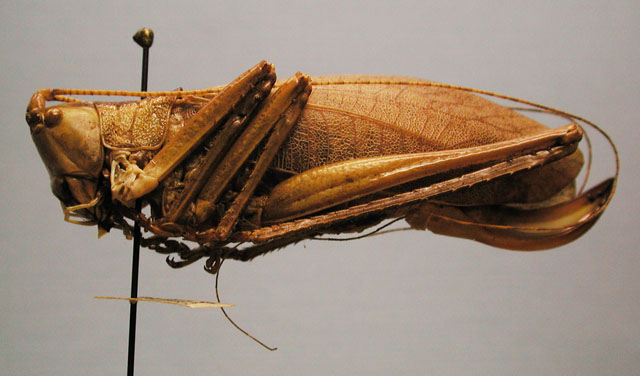
|
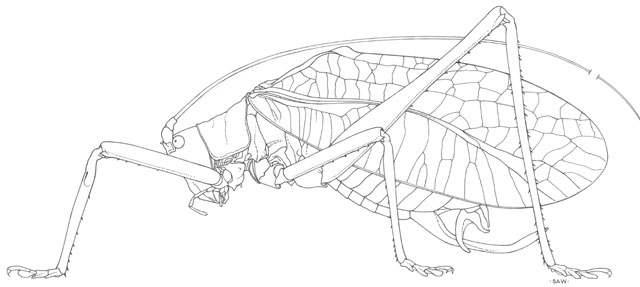
|
| map | green male | pinkish-brown female | male |
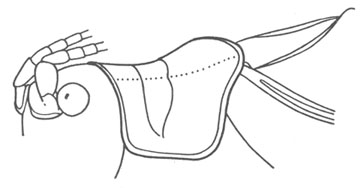
|
|||
| pronotum |

| Song at 25°C: | A loud, hollow chlonk repeated at 2–3 sec. intervals. The 2–3 pulses in each phrase are at a rate of 20/sec and cannot be easily distinguished. |
| Identification: | Length 41-49 mm. Length of pronotum greater than rear width; side of pronotum wider than deep. |
| Similar species: | Pterophylla camellifolia has the side of the pronotum deeper than wide and calls from the crowns of trees with 3- to 5-pulse phrases in which the pulses are easily distinguished. |
| Habitat: | Palmettos, scrubby oaks, and vine-covered undergrowth. |
| Season: | June to September. |
| Seasonal data: | N. Fla. data. |
| Remarks: |
This species occurs in two color phases--pinkish-brown and green. The pinkish-brown phase is more prevalent in females (30%) than in males (10%). Unlike Paracyrtophyllus robustus, the only other U.S. species of true katydid known to have a pinkish form, those of Lea floridensis are not associated with outbreak populations.
There is little doubt that the Florida true katydid originated in Florida and from northern stock. Its relatives in the West Indies are not as similar in morphology or ecology nor are they as close geographically. H. F. Strohecker (1939) reported that caged individuals of this species ate leaves of dwarf oak and green berries and pedicels, but not leaves, of cabbage palmetto. |
| More information: |
Subfamily Pseudophyllinae. |
| References: | Hebard 1939, Hebard 1941, Strohecker 1939. |
| Nomenclature: | OSF (Orthoptera Species File Online). |

|

|